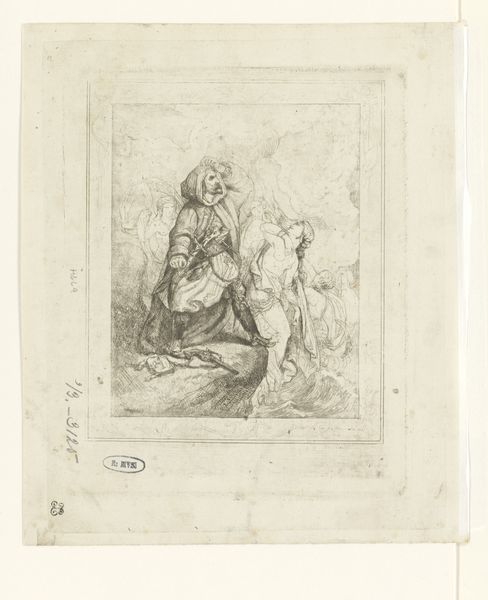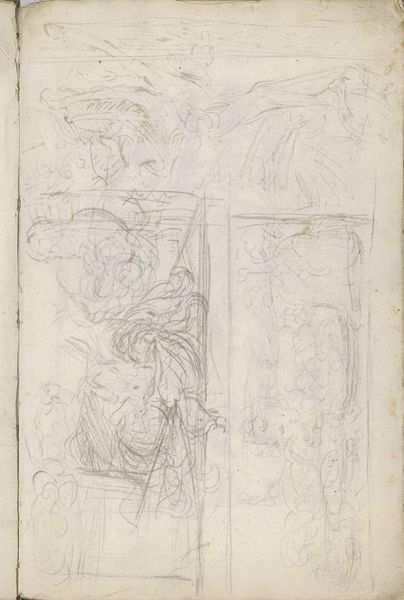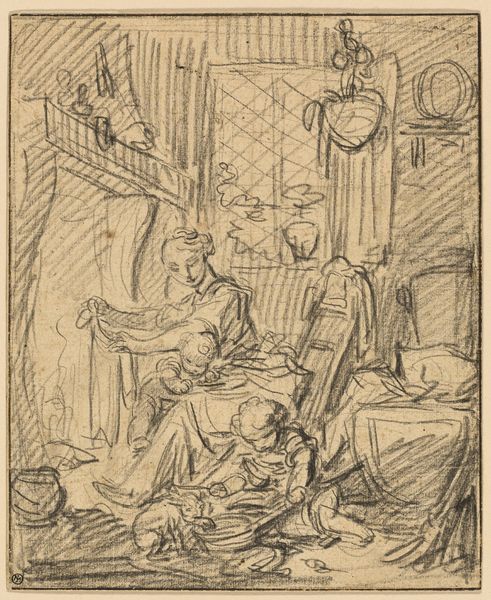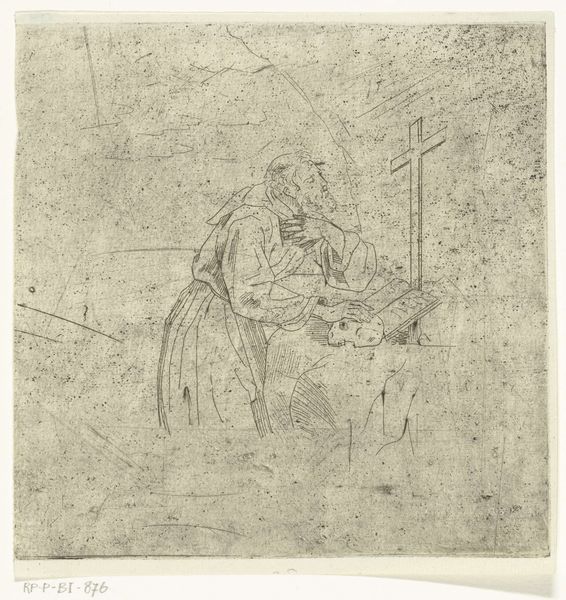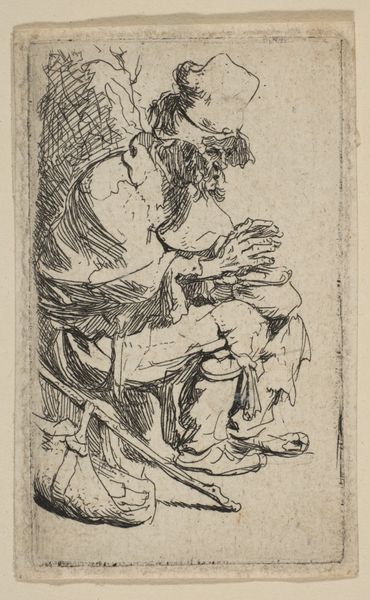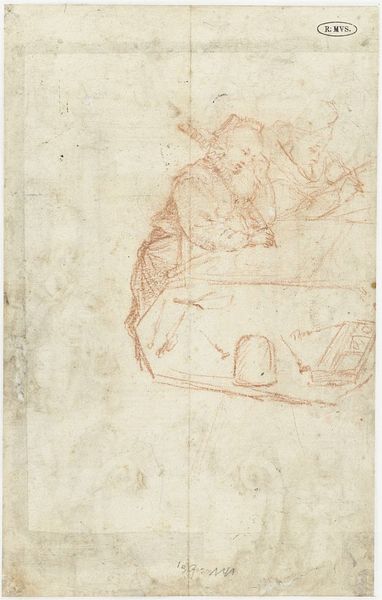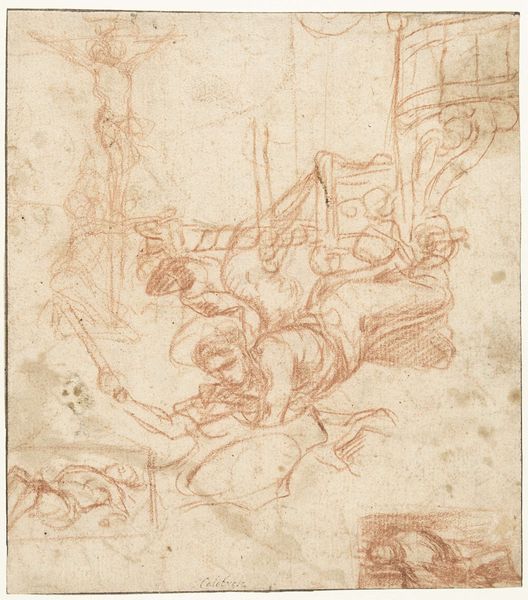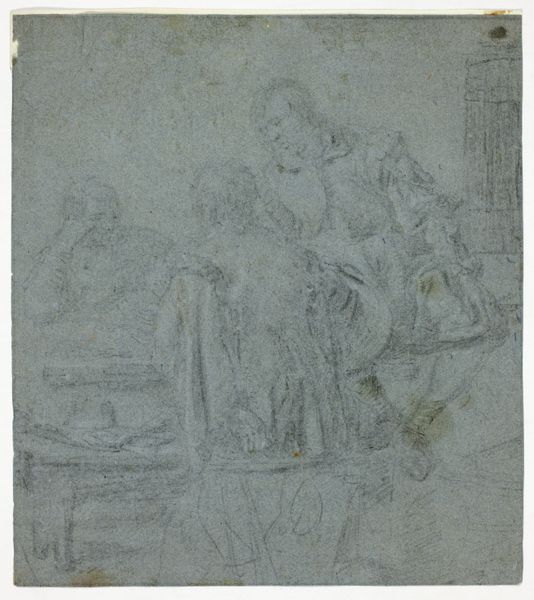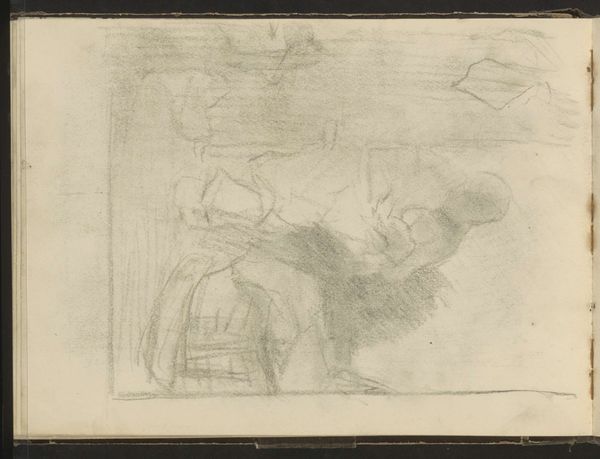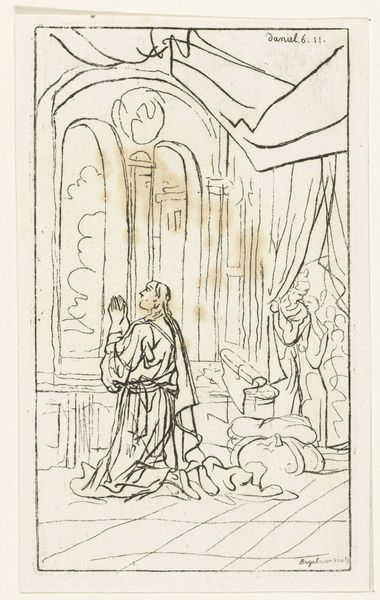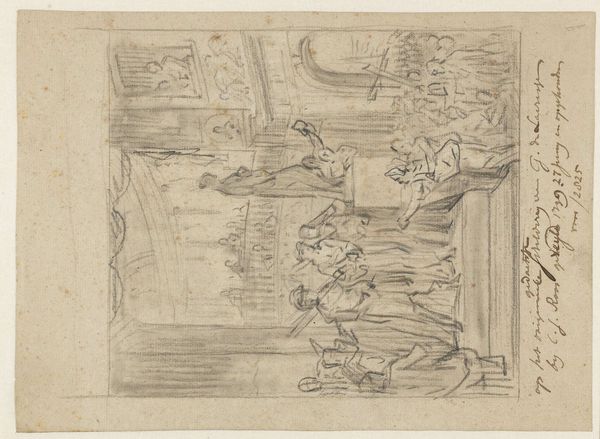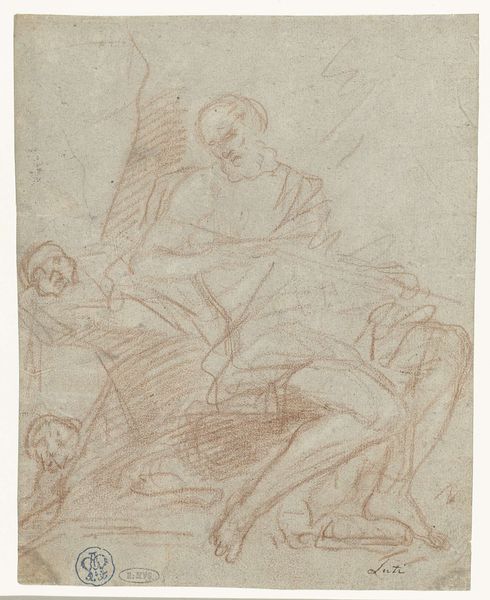
Bukkende vrouw die objecten in haar schort verzamelt 1876 - 1901
0:00
0:00
drawing, paper, pencil
#
portrait
#
drawing
#
impressionism
#
pen sketch
#
figuration
#
paper
#
pencil
#
genre-painting
Dimensions: height 120 mm, width 86 mm
Copyright: Rijks Museum: Open Domain
Curator: Looking at this pencil drawing from between 1876 and 1901, we see Gerrit Willem Dijsselhof's "Bukkende vrouw die objecten in haar schort verzamelt"—"Bending Woman Collecting Objects in her Apron," presently housed at the Rijksmuseum. It is an interesting pen sketch. Editor: It is, isn’t it? The immediate effect for me is one of almost furtive quiet. The bowed figure and monochromatic rendering lend it a feeling of hushed domesticity. There's also something visually arresting about the rough frame design around the central scene. Curator: Indeed. The woman's posture, head bowed and body bent, speaks to the cultural narratives surrounding labor and the female form during this period. It's a subject that resonates deeply within the genre painting tradition. The apron, a common symbol, here denotes her domestic role and possibly her social status. We are seeing a class and gender power relation reflected here. Editor: Absolutely. And consider the lack of detail, the near anonymity. It suggests a universal figure rather than an individual portrait. This allows viewers to project their own understandings of women and work onto the image. It feels like a commentary on the burdens placed upon women through time, presented with striking, almost severe, simplicity. How has the drawing been displayed and received, historically? Curator: Early receptions tended to emphasize Dijsselhof’s break from traditional academic styles and embraced his embrace of Impressionistic representation of everyday life, particularly regarding social justice movements. Editor: The sketch's impressionistic quality helps convey the fleeting nature of daily routines. The pen and pencil strokes create an airy lightness. It also captures the inherent dignity and quiet resolve I feel radiating from the woman in her labor, which feels profoundly human, transcending any particular historical moment. Curator: It's fascinating to observe how such simple lines can invoke such profound emotions. Dijsselhof's talent lay in transforming the mundane into something deeply symbolic. It reflects a changing time. Editor: Precisely. It is art holding a mirror up to society and making you reflect on yourself in it too.
Comments
No comments
Be the first to comment and join the conversation on the ultimate creative platform.
